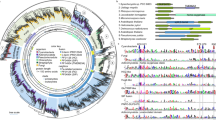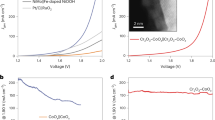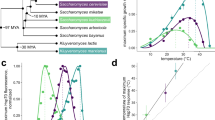Abstract
The unicellular halotolerant alga Dunaliella salina had the ability to oxidize NADH and reduce Fe(CN)63−. The redox reactions were to some extent stimulated by slight hyperosmotic shock (2.0 mol/L → 2.6 mol/L NaC1), but markably inhibited by abrupt hyperosmotic shock (2.0 mol/L → 3.5 mol/L NaC1) and hypoosmotic shock (2.0 mol/L → 1.0 mol/L NaC1; 2.0 mol/L→0.67 mol/L NaC1). With the adaptation of algal cells to osmotic shock by accumulating or degrading intracellular glycerol, the plasmalemma redox activities were also restored. The O2 uptake stimulated by NADH could be promoted by FA and SHAM. Hypoosmotic shock increases the basal respiration rate of alga cells, but weakened the stimulating effects of NADH, FA and SHAM on O2 uptake. On the other hand, hyperosmotic shock reduced the basal respiration rate, but relatively enhanced the above effects of NADH, FA and SHAM. H+ extrusion of alga cells was inhibited by NADH and stimulated by Fe(CN)63−. Vanadate and DES could inhibit H+ efflux, but had little effect in the presence of NADH and Fe(CN)63−. Both hyper- and hypoosmotic shock stimulated H+ extrusion. This effect could be totally inhibited by vanadate and DES, but almost unaffected by 8-hydroxyquinoline. It was suggested that H+-ATPase probably played a more important role in H+ extrusion and osmoregulation under the conditions of osmotic shock.
Similar content being viewed by others
Introduction
Oxidation-reduction (redox) system found in mitochondria and chloroplasts also universally exists in plasma membrane of plant cells1, 2. Like H+-ATPase, it may participate in the establishment of transplasmalemma electrochemical potential of H+ which provides energy for solute transport, and plays significant roles in the physiological and biochemical processes in the course of plant growth and development. Evidence is accumulating that active oxygen is generated when trans-plasmalemma electron transfer and O2 absorption occur. This process is very important in the reaction and adaptation of plants to various environmental stress, such as pathogen, drought, low temperature, hypoosmotic shock and UV radiation. Barr and Crane3 found that the redox system in the plasmalemma of carrot cells was very sensitive to salt stress, both NADH oxidation, Fe(CN)63− reduction and H+ extrusion were inhibited. Qiu et al.4 also demonstrated that the redox activities in the plasmalemma of wheat root cells were greatly decreased under water stress. So the redox system in plasmalemma may have close relation to plant's reaction to stress. Dunaliella salina is a kind of unicellular green algae without rigid cell wall. It is extremely halotolerant and has strong ability of osmoregulation, capable of growth in salinities as different as 0.05 mol/L and 5.5 mol/L NaC1. Furthermore, it reacts sensitively to many extracellular signals, thus becomes a model system for the study of plant resistant mechanisms. In our laboratory, much research work on the osmoregulation of D. salina have been conducted5, 6 and a redox system in its plasmalemma was characterized7. A basic question arises regarding the role of plasmalemma redox system in osmoregulation. In the present study, we report the response and possible functions of plasmalemma redox system of D. salina cells in the course of osmotic shock.
Material and Methods
Material
The source of the Dunaliella salina strain used in this study was grown as described8 in aseptic medium containing 2.0 mol/L NaCl, under 12 h light (60 μmol/m2/s PAR) at 26°C. Those used in experiment were at logarithmic growing phase.
Osmotic shock
Osmotic shock was applied by dilution with media containing 5.0 mol/L NaCl or no NaCl to the desired final NaCl concentrations6. 2 min after shock, we began to measure the rates of redox activity, oxygen uptake and proton efflux.
Redox assays
Culture samples containing (1-3 × 106 cells/ml) were centrifuged at 1000 g for 5 min: The cells were rinsed twice with the isoosmotic solution containing 0.3 mmol/L CaCl2, 5 mmol/L MgCl2 and 10 mmol/L Tris-MES (pH 8.4) and resuspended in the same solution. A 2.5 ml aliquot was taken for various treatments. NADH or Fe(CN)63− were added to start reaction. NADH oxidation was measured in the incubation medium as a loss of absorption at 340 nm in a Shimadzu UV-190 double-beam spectrophotometer using a millimolar extinction coefficient of 6.23. Fe(CN)63− reduction was determined by a loss in absorption at 420 nm using a millimolar extinction coefficient of 1.00.
Detection of glycerol content
Glycerol estimation was carried out according to the procedures of Oren-Shamir et al.9
Measurement of oxygen uptake
Oxygen consumption was measured by Clark-type oxgen electrode, which was fixed at the bottom of experimental cup made of polyesteramide. Assay mixture consisted of 2.5 ml algal suspension and the cup was tightly sealed. Oxygen absorption was determined at 25°C in the dark and lasted 15 to 30 min.
Proton extrusion
After resuspension in medium containing 2.0 mol/L NaCl, the algal cells were transferred to a polyethylene cone with flat bottom of 50 ml and stirred slightly. After bubbled with air not containing CO2 for 10 min, the measurement began with a PD-2 research pH meter and lasted for 30 min. The amount of H+ extrusion of different samples was determined by back titration with 0.09879 mol/L NaOH at the same time of measurements.
Cell number was determined for each sample in a Coulter counter for more than 3 times until the average deviation less than 10%.
Results
Effect of osmotic shock on plasmalemma redox activities of D. salina
Dunaliella salina cell has the ability to oxidize and reduce extraeellular nonpermeable electron donor NADH and electron acceptor Fe(CN)63− respectively. In the presence of both NADH and Fe(CN)63−, the redox activity was greatly increased (Tab 1). Slight hyperosmotic shock (2.0 mol/L → 2.6 mol/L NaCl) could, to some extent, enhance the plasmalemma redox activity, while abrupt hyperosmotic shock (2.0 mol/L → 3.5 mol/L NaCl) and hypoosmotic shock (2.0 mol/L → 1.0 mol/L NaCl; 2.0 mol/L → 0.67 mol/L NaCl) notably inhibited the redox activity, and the inhibition effect had some correlation with the extent of shock (Tab 1).
Glycerol is primarily an only osmoticum in D. salina cells5, 9. In responding to hyper- or hypoosmotic changes in the medium, the cells first react as osmometers, shrinking or swelling, soon followed by rapid synthesis or elimination of glycerol (Fig 1). Full osmotic adaptation is marked by reassumption of the original cell volume. During the adaptation process, the plasmalemma redox activity was also gradually recovered (Fig 2).
Effect of osmotic shock on O2 absorption in the presence of NADH
NADH stimulated O2 absorption of algal cells, an effect which could greatly enhanced by adding SHAM (1.0 mmol/L) and ferulic acid (FA, 1.0 mmol/L) (Fig 3, 4). Hypoosmotic shock increased the basal respiration rate, but weakened the stimulating effects of NADH, SHAM and FA on O2 uptake (Fig 3).
On the contrary, hyperosmotic shock reduced the basal respiration rate of the cells, but relatively enhanced the stimulating effects of NADH, SHAM and FA on O2 uptake (Fig 4).
Plasmalemma redox system and H+ transport
Addition of exogenous NADH inhibited H+ efflux of D. salina cells, while Fe(CN)63− stimulated H+ efflux. In the presence of both NADH and Fe(CN)63−, the rate of H+ efflux increased dramatically to about 409.7% of control (Tab 2).
Plasmalemma H+ -ATPase inhibitors such as vanadate and DES could almost completely inhibit acidification of the medium. The addition of NADH and Fe(CN)63− was then accompanied by a renewed acidification of medium. The above effect of NADH and Fe(CN)63− on H+ efflux could be inhibited by 8-hydroxyquinoline, an in- hibitor of plasmalemma redox system (Tab 4). The stimulatory effect of Fe(CN)63− on H+ efflux was enhanced by ethanol treatment, and the enhancement was inhibited by arsenite treatment (Tab 3).
Both hypo- and hyperosmotic shock markable increased the H+ efflux rate of agal cells. This effect was totally inhibited by vanadate and DES, but almost unaffacted by 8-hydroxyquinoline (Tab 4)
Discussion
Dunaliella salina has attracted great attention of scientists as a model system to study the response of plants to environmental stress5, 10. On receiving stress signals, the plasma membrane composition, structure and function are altered. This is very important for the cells to transduce extracellular signals, to lead to physiological reactions and to adapt to stress conditions. We found that plasmalemma redox system of D. salina is very sensitive to osmotic shock. Except of slight hyperosmtic shock, abrupt hyperosmotic shock and hypoosmotic shock greatly decreased the rates of NADH oxidation and Fe(CN)63− reduction (Tab 1), which is in accordance with the phenomenon observed by Crane and Barr under salt stress3 and Qiu et al. under water stress4.
The electron transport chains of plasmalemma redox system are multiple 11, 12: innerside or outerside cis-plasmalemma electron transfer; inward or outward trans-plasmalemma electron transfer etc. The enzymes responsible for electron transfer are NAD(P)H: Fe(CN)63− standard system oxidoreductase, NAD(P)H: Fe3+ chelator oxidoreductase, NAD(P)H: O2 oxidoreductase, peroxidase, nitrate reductase, and so on2, 12. Generally speaking, exogenous NADH increased O2 uptake through plasmalemma electron transport. This process was enhanced by two peroxidase activitors FA and SHAM (Fig 3, 4), suggesting that the oxidoreductase in the plasmalemma of D. salina might have peroxidase properties. The stimulation of basal respiration rate of algae by hypoosmotic shock was favorable to provide energy for the conversion of glycerol to starch. That hypoosmotic shock weakened the O2 uptake stimulated by NADH, SHAM and FA was in agreement with the decrease of plasmalemma redox activity at the time, and also suggested that mitochondria electron transfer was primarily responsible for O2 uptake during hypoosmotic shock (Fig 3). The conversion of starch to glycerol in the course of hyperosmotic shock was an energy producing process, thus required little energy from the respiration chain, accordingly the basal respiration rate of algal cells was reduced (Fig 4). Abrupt hyperosmotic shock notably inhibited NADH oxidation, but relatively enhanced the stimulatory effects of NADH, SHAM and FA on O2 uptake. The inconsistence indirectly showed that O2 might not be the final electron acceptor of exogenous NADH oxidation enhanced by SHAM and FA; or NADH might cause the “wound” response of agal cells during hyperosmotic shock13, which stimulated other O2 consumption pathways related to SHAM and FA. It was also possible that hyperosmotic shock initiated another redox pathway in plasma membrane different from standard system. This new redox pathway used O2 as terminal electron acceptor and probably reduced glutathione and ascorbate, not NADH, as terminal electron donors. From the different effects of hypo- and hyperosmotic shock on plasmalemma redox activities and O2 uptake, we could see that hypo- and hyperosmotic shock probably influenced the operation of plasmalemma redox system through different mechanisms, and the responses of various oxidoreductases in plasmalemma to osmotic shock might also be different.
Up to now, it is thought that only plasmalemma H+-ATPase was responsible for H+ extrusion in D. salina8, 14. Our evidence showed that the plasmalemma redox system could also be proton pumping and therefore involved in energization of the plasma membrane (Tab 2, 3). Ethanol, which could increase the intracellular NADH level through the action of cytoplasmic alcohol dehydrogenase15, led to an increase of H+ efflux. In contrast, arsenite, which could decrease the intracellular NADH level, inhibited H+ efflux (Tab 3). The cytoplasmic NADH generated might stimulate trans-plasmalemma electron transport, which in some way coupled to H+ efflux. The H+ efflux in the presence of both NADH and Fe(CN)63− was not inhibited by plasmalemma H+-ATPase inhibitors, but inhibited by plasmalemma redox system inhibitors (Tab 3). This supported the idea that plasmalemma redox system was directly coupled to H+ efflux, not dependent on the activation of H+-ATPase. Moreover, the redox-driven H+ pump possibly had regulatory connections with H+- ATPase. Accompanying trans-plasmalemma electron transport, H+ may extrude through a protonated electron carrier (ubiquinone), or H+ channels, or the conformational change of redox proteins2, 11. Under osmotic shock conditions, H+ efflux was inhibited by vanadate and DES, but almost unaffected by 8-hydroxyquinoline (Tab 4). This indicated that the contribution of plasmalemma redox system to H+ efflux was small. This was consistent with the reduction of redox activities at the time. So the stimulatory effect of hypo or hyperosmotic shock on H+ efflux is mainly through the activation of H+-ATPase. It was reported that water stress increased plasmalemma H+-ATPase activity4. Chen et al.5 also found that osmotic shock stimulated H+-ATPase, decreased the intracellular ratio of ATP to Pi, and thus activated glycerol metabolism. The increase of H+-ATPase activity under environmental stress is thought to play a central role in the adjustment of algal cells against stress 5, 9, but the effect of plasma membrane redox system on the adaptation to stress can not be easily excluded and remains to be investigated.
References
Misra PC . Transplasma membrane electron transport in plants. J Bioenerg Biomembr 1991; 23:425–41.
Chen SX, Jiao XZ . Physiological functions of plant plasmalemma redox system. Life Sci 1995; 7:24–32 (in Chinese).
Barr R . The possible role of redox associated protons in growth of plant cells. J Bioenerg Biomembr 1991; 23:443–67.
Qiu QS, Li L, Liang HG, Jiao XZ . Effect of water stress on the redox system of the plasma membrane of wheat roots. Acta Phytophysiol Sinica 1994; 20:145–51 (in Chinese).
Chen Z, Jiao XZ, Liu H . Role of the plasma membrane H+-ATPase during the osmoregulation of the alga Dunaliella salina under hyperosmotic stress. Acta Phytophysiol Sinica 1991; 17:333–41 (in Chinese).
Li HP, Jiao XZ . Changes in intracellular glycerol content during osmoregulation in unicellular green alga Dunaliella salina. Acta Phytophysiol Sinica 1994; 20:91–9 (in Chinese).
Chen SX, Li L, Yen CC, Jiao XZ . Relationship of plasmalemma redox system to K+ uptake by Dunaliella salina. Acta Bot Sinica 1996; 4:295–301 (in Chinese.)
Pick U, Ben-Amotz A, Karni L et al. Partial characterization of K+ and Ca2+ uptake systems in the halotolerant alga Dunaliella salina. Plant Physiol 1986; 81:875–81.
Oren-Shamir M, Pick U, Avron M . Involvement of the plasma membrane ATPase in the osmoregulatory mechanism of the alga Dunaliella salina. Plant Physiol 1989; 89:1258–63.
Cowan AK, Rose PD, Horne LG . Dunaliella salina: A model system for studying the response of plant cells to stress. J Exp Bot 1992; 43:1535–47.
Moller IM, Crane FL . Redox processes in the plasma membrane. In: Larsson C, Moller IM (eds), The Plant Plasma Membrane. Springer-Verlag Press, Berlin Heidelberg. 1990, p93.
Crane FL, Barr R . Plasma membrane oxidoreductase. Crit Rev Plant Sci 1989; 8:273–307.
Kochian L, Lucas WJ . Potassium transport in corn roots III. Perturbation by exogenous NADH and ferricyanide. Plant Physiol 1985; 77:429–36.
Weiss M, Sekler I, Pick U . Characterization of soluble and membrane bond forms of vanadate sensitive ATPase from plasma membrane of the halotolerant alga Dunaliella salina. Biochim Biophys Acta 1989; 974:254–60.
Chalmers JDC, Coleman JCD . Ethanol stimulated proton extrusion by cells of carrot (Daucus carota L.) grown in suspension culture. Biochem Inter 1983; 7:785–91.
Acknowledgements
We wish to thank Professor Jin Shan NI (Institute of Plant Physiology, Chinese Academy of Sciences, Shanghai) for his critical review and invaluable comments on the manuscript. We also thank Ms Lin LI for her technical assistance in experiments. The project is supported by National Natural Science Foundation of China.
Author information
Authors and Affiliations
Rights and permissions
About this article
Cite this article
Chen, S., Yen, C. & Jiao, X. Effect of osmotic shock on the redox system in plasma membrane of Dunaliella salina. Cell Res 6, 31–38 (1996). https://doi.org/10.1038/cr.1996.4
Received:
Revised:
Accepted:
Issue Date:
DOI: https://doi.org/10.1038/cr.1996.4







